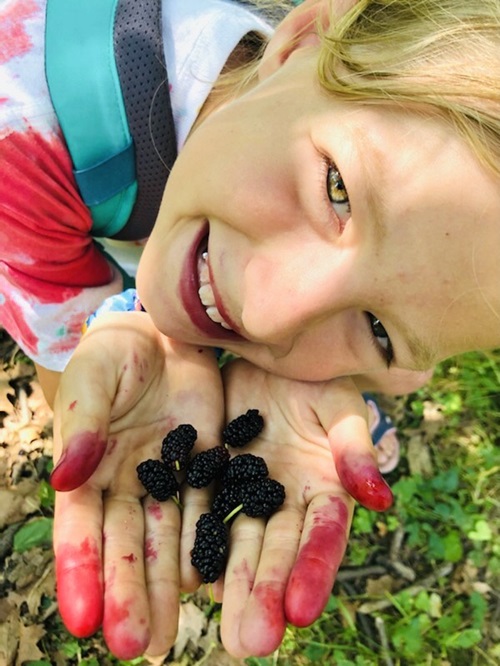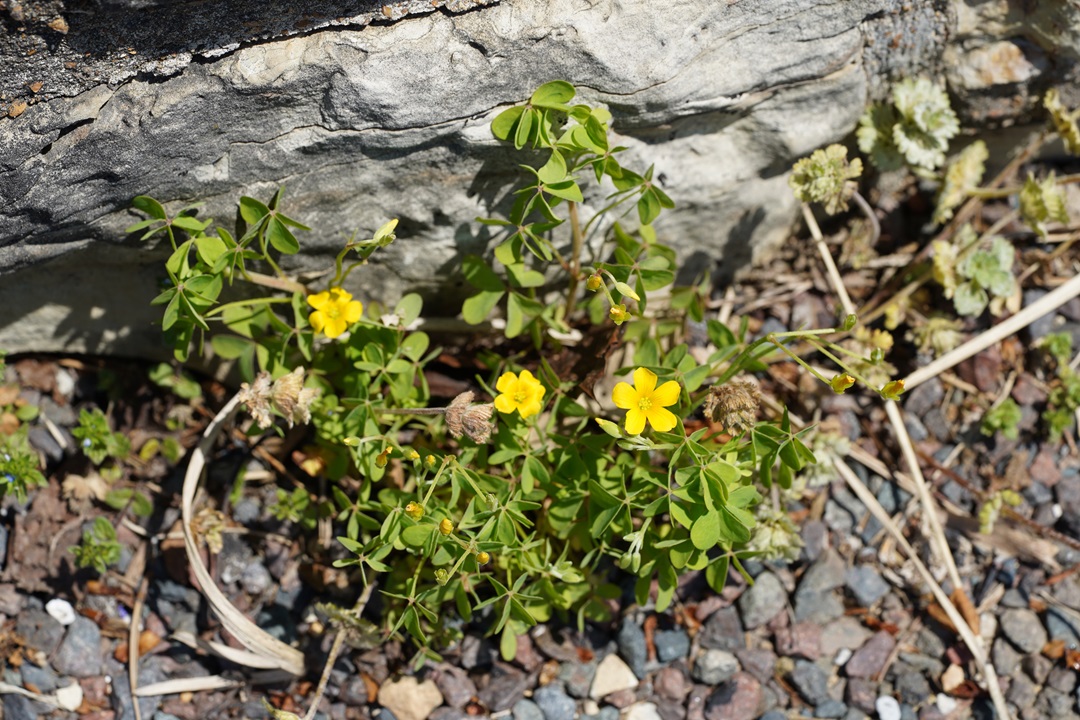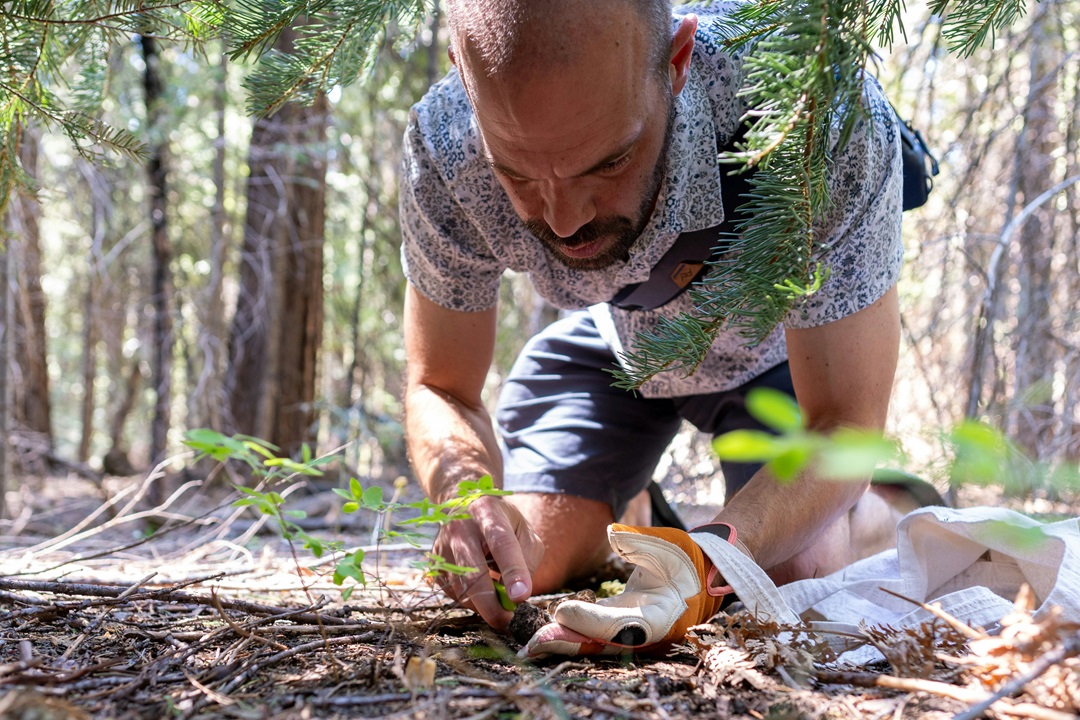There are outdoor treasures all around us. And I’m not talking about our abundant trails and waterways. Foragers know that a little knowledge, patience, and a closer eye to the natural world can uncover a wealth of new flavors, textures, and outdoor experiences.
“Foraging is a good way to turn what otherwise would be a normal hike into a treasure hunt,” says Catrina Adams, paleoethnobotanist and education director of the Botanical Society of America.
Foraging also offers nature enthusiasts a deeper connection to the outdoors. “Once you learn a few plants, it opens up your mind,” says Angela Wildermuth, local forager and founder of the St. Louis Urban Foragers Facebook group. “Suddenly, you realize there’s all these edible or medicinal plants you’ve been passing by without noticing.”
How to Begin Foraging
If you’ve never foraged, it might feel intimidating — all those plants to learn! What’s safe to eat? Where should you look? Consider the following tips your “Foraging 101” handbook.
Start slowly. First, know that plant identification is the foundation of safe, successful foraging. Adams recommends picking a few plants to learn in your local environment and observing them throughout their entire lifecycle. “The best time for collecting plants isn’t typically the best time for identifying them,” she adds.
In addition to knowing what edible plants look like, you need to be familiar with any lookalikes, what parts of the plant are edible, and whether they can be eaten raw or need to be processed in any particular manner.

Berries. (Angela Wildermuth/St. Louis Urban Foragers)
Know the dangers. The most common foraging mistake is thinking nothing is highly toxic, says Adams. Poisonous plants will typically taste and smell terrible, but that’s not true with poisonous mushrooms — and it might take a few days to realize you’ve made a mistake.
Plus, humans have lots of food sensitivities. You never know how a foraged ingredient will affect you, so it’s best to try one at a time. Elderberry fruits, for example, are edible, but the seeds are toxic. “Most people don’t have any problems because the seeds are so hard they pass through the digestive system, but some people digest things really fully and can get an upset stomach,” says Adams.
Sample before collecting. Foraged foods don’t have a consistent taste like the foods you can buy in a grocery store. Varying growing conditions and stressors produce different flavors. Acorns, for example, can have high tannin levels if the oak tree suffered an insect infestation. “So even if one oak’s acorns taste really good one year, they might taste bad the next year because the plant is trying to poison the insects bothering it,” Adams says.
Stay focused while collecting. A common mistake is to stop paying attention after you’ve positively identified a plant and begin collecting. This is a good way to accidentally collect a lot of something similar but inedible, Adams warns.
If it doesn’t taste good, don’t eat it. Even if you went through the trouble of collecting something, don’t eat it if it’s not tasty. The plant could have pesticides on it or could have experienced stressful growing conditions that resulted in a bad taste.

Wood sorrel. (Botanical Society of America)
Be creative about where to forage. Sure, you can collect on a hike or big outdoor excursion. (You’ll want to make sure plants are growing in a reasonably clean spot.) But you can also forage in your backyard. “Once you start seeing things, you’ll find them in places you never would have noticed before, like in your yard or a wild overgrown lot,” Wildermuth says.
Adams suggests growing wild plants in your yard (presuming you have the space) to observe and experiment with throughout the year. One of her recommendations is clove currants, a kind of gooseberry.
Don’t totally trust technology. Plant-identification apps can help give a good idea of what a plant is but shouldn’t be relied upon entirely because even they can get the plant wrong, Adams cautions. “It’s always best to cross-check with another reference — like an expert friend, book, or other source — to be sure.”
Learn from an experienced forager. Missouri Botanical Garden and Shaw Nature Reserve occasionally offer foraging classes. Recent examples include classes on cooking with fall wild edibles, foraging for natural dyes, and an online class on foraging for mushrooms. On November 7, Shaw Nature Reserve is offering a class on acorn flour and hickory syrup. Visit mobot.org/classes for current offerings or to register. Wildermuth also offers family workshops through her business, Wilderkids Urban Forest School.
Some final words of wisdom from Adams: “Don’t be so afraid that you don’t let yourself experience foraging. It’s not that hard to identify plants that there’s no way to tell the difference between lookalikes. But if you’re the type of person who will just try something and see what happens, maybe dial it back a little. Don’t eat a sizable amount of anything until you know whether you’re sensitive to it.”
Author: Stephanie Zeilenga is a contributor to Terrain.
Top image: Michael Kahn.


[…] Everything You Always Wanted to Know About Foraging But Were Afraid to Ask – Terrain Magazine […]